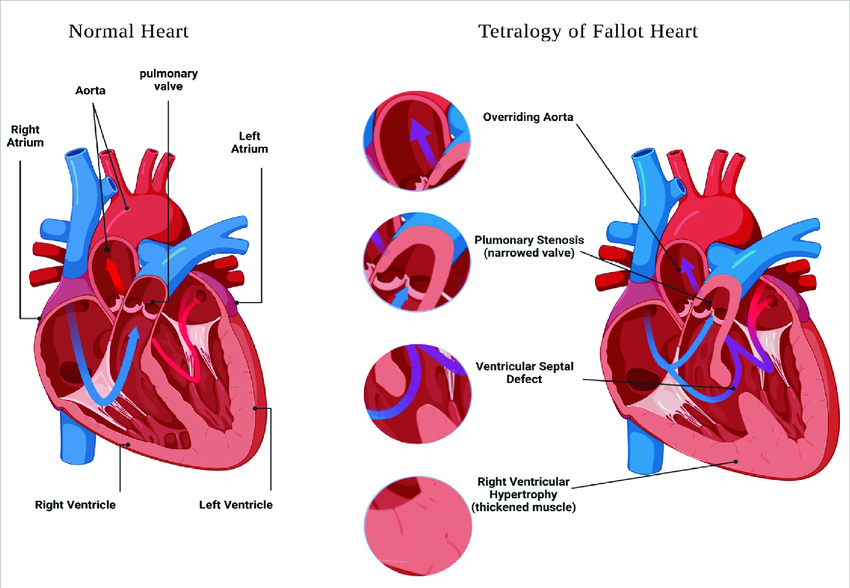A Heart with Four Challenges: Understanding Tetralogy of Fallot
Tetralogy of Fallot (TOF) is a complex heart condition that affects newborns. It’s not just one defect, but a combination of four! This blog post will break down what TOF is, how it affects the heart, and the hopeful outlook for children born with it.
The Four Parts of the Puzzle:
TOF is like a four-piece puzzle where each piece disrupts the normal flow of blood through the heart. Here’s a quick look:
Narrowed pulmonary valve: This acts like a bottleneck, making it harder for blood to flow to the lungs to pick up oxygen.
Ventricular septal defect (VSD): A hole in the wall separating the heart’s lower chambers allows blood to mix, reducing oxygen-rich blood reaching the body.
Overriding aorta: The main artery carrying blood out of the heart (aorta) is positioned abnormally, sometimes even straddling the VSD.
Right ventricle enlargement: Due to the extra workload of pumping blood against the narrowed valve, the right ventricle gets bigger.
Symptoms and Treatment:
These heart defects can cause symptoms like fatigue, shortness of breath, and a bluish tint to the skin (cyanosis). Thankfully, with advances in medicine, TOF is usually treated with open-heart surgery to repair the defects. This can be done in one surgery or staged depending on the child’s condition.
Living a Full Life:
Children who undergo successful TOF repair can lead active and healthy lives. Regular check-ups with a cardiologist are important to monitor their heart health. There might be some limitations on strenuous activities in some cases, but most children with repaired TOF can participate in sports and other activities they enjoy.
Finding Hope:
A TOF diagnosis can be scary, but remember, medicine has come a long way. With proper treatment, children with TOF can grow up strong and live fulfilling lives.

 Advanced cardiac care for newborns and children
Advanced cardiac care for newborns and children